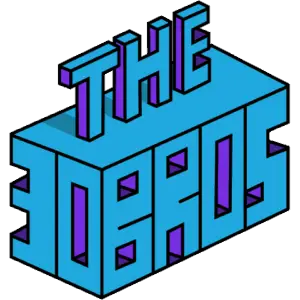ChiTuBox is a third-party slicing program for resin-based SLA, DLP, and LCD 3D printers. 2017 saw the release of version 1.0 by the Chinese business CBD-Tech. ChiTuBox is undoubtedly the next best option after a resin printer’s proprietary software. It maintains a straightforward user interface while providing excellent control over printing parameters. Support is also provided for Linux, Mac, and Windows. As a beginner, it can be overwhelming to see the wide majority of options available for your ChiTuBox settings. In this article, we’ll walk you through the process of getting started with ChiTuBox and the ideal settings for Elegoo Mars 3.
The best ChiTuBox settings for Elegoo Mars 3 are as follows:
- Bottom exposure: 35s
- Normal exposure: 2.5-3s
- Layer height: 0.05mm
- Lift speed: 80-100mm/s
- Bottom lift speed: 60mm/s
- Anti-aliasing: Off or 2-4 (depending on smoothness)
How to Get Started with ChiTuBox
Making sure you’re slicing for your particular brand of printer is one of the most crucial stages toward producing high-quality prints. How can your slicer determine which printer you are using, then?
You must first click on the Settings button on the right when ChiTuBox initially launches to access the corresponding menu. It can be challenging to discover the “Add new printer” button, but it is located in the top left corner of the Settings menu.
In this scenario, using ChiTuBox provides the advantage of having preset settings for all Elegoo printers. The majority of the settings will be instantly configured for you when you choose your printer’s model in ChiTuBox (whether it is an Elegoo or another model), so you only need to make a few adjustments to improve print quality rather than attempting to design the entire profile from scratch.
Related: Do 3D Printers Come With Software? Here Are the Facts
Ideal Settings

Exposure Settings
You must once more open the Settings menu in order to locate and modify the exposure settings in ChiTuBox. The bottom and standard exposure settings may be found there after you go to the Print tab first.
Exposure Time
This slicer parameter controls how fast the other layers of your model must cure; set it too high and you will lose details and dimensional precision and too low will make your print brittle and prone to fail. The ideal exposure time for the Elegoo Mars 3 is 2.5-3s.
Bottom Exposure Time
The amount of time the first few layers of your print are cured depends on this slicer setting. In order to guarantee that your print adheres to the bed, this needs to be somewhat longer than your typical exposure period. However, if you raise it too high, your prints will be challenging to remove. For the Mars 3, the ideal bottom exposure time is 35s.
Layer Height
The height of each individual layer wherein your design is printed, known as layer height, greatly affects practically every aspect of your print. A lower layer height will provide a smoother final product with cleaner details in the Z-axis since it will be less noticeable in the finished print. Smaller layers also require shorter exposure periods, but since there are more layers to complete, the total print time will rise. On ChiTuBox, you may modify the layer height in the Print tab of the Settings menu. For the majority of cases, 0.05 mm (50 μm) is an excellent starting point because it strikes a reasonable compromise between print quality and print speed. The majority of resin printers, however, can also function effectively with layer heights of between 0.025 mm (25 μm) to 0.1 mm (100 μm).
Related: 3D Slicing Software – The Basics
Lift Speeds
In ChiTuBox, the Print tab inside the Settings menu allows you to change the lift speeds. ChiTuBox has two lift speed options: Bottom Lift Speed and Lift Speed.
Lift Speed
It’s OK to set this a little bit higher; 80 to 100 mm/s should work without any problems. This parameter determines the speed at which the construction plate is lifted after the bottom lift point.
Bottom Lift Speed
This option controls how quickly the build plate is initially removed from the resin vat after each layer has dried. The most secure option is to maintain this relatively slow, approximately 60 mm/s, as this stage of the lift is most susceptible to problems like the print falling off the build plate or clinging to the FEP.
Anti-aliasing
Similar to anti-aliasing in other applications, resin printing uses anti-aliasing. If you enjoy playing video games, you may already be familiar with the idea of anti-aliasing, which is basically the smoothing out of curved or diagonal lines. These may seem jagged and pixelated without anti-aliasing, and your print may suffer as a result. Yet why would you choose to disable anti-aliasing if that were the case?
Related: Elegoo Mars 3 vs Mars 3 Pro: Which One is the Better One?
Anti-aliasing is good for smooth curves, but it might make sections with lots of small, crisp features blurry and less distinct. As a result, how much anti-aliasing you should apply will largely rely on the model you’re printing.
In order to maintain accuracy and detail, you usually want to keep it as low as possible for your print. We advise leaving anti-aliasing off if you’re printing something that needs to be extremely accurate but where a smooth finish isn’t crucial, a setting of 2-4 might be an excellent place to start.
Frequently Asked Questions
How Fast Does the Elegoo Mars 3 Print?
The Elegoo Mars 3 prints at a rate of 22.5 mm/hour.
Does Chitubox Support Mars 3?
Elegoo recommends the ChiTuBox slicer for its Mars 3 and the ChiTuBox offers official support for many Elegoo printers.
What File Format Is Used by Elegoo Mars 3?
The Elegoo Mars 3 uses a .ctb file format.
Final Words
In this article, we created a guideline for the best ChiTuBox settings to opt for when using the Elegoo Mars 3. Happy printing!
